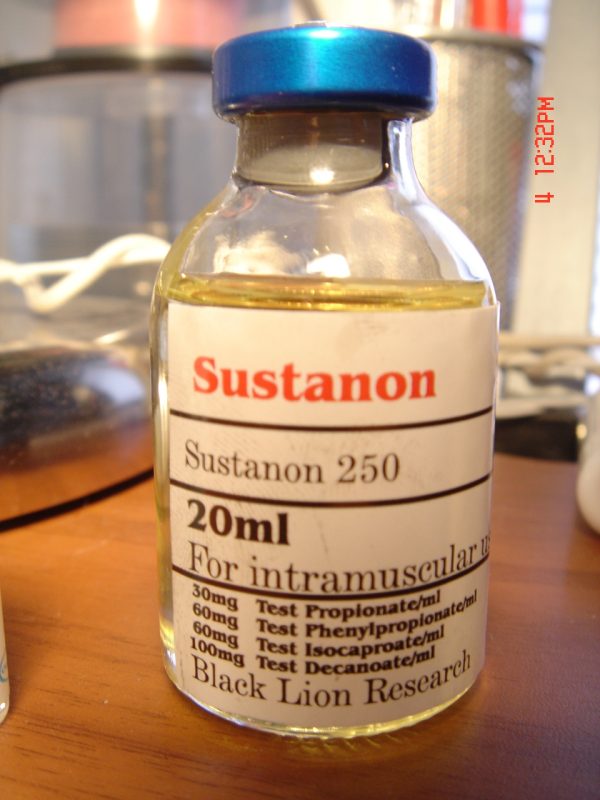Does
Does Sustanon Have A Long Half-Life?
Does Sustanon Have A Long Half-Life? Sustanon is a commonly used testosterone replacement therapy (TRT) medication. It is a blend of four different esterified forms of testosterone – testosterone propionate, testosterone phenylpropionate, testosterone isocaproate, and testosterone decanoate. This combination creates a medication with both immediate and long-lasting effects on the body.
One key factor to consider when using any medication is its half-life, or the time it takes for half of the active substance to be eliminated from the body. In the case of Sustanon, its half-life depends on the specific esters and doses used. This can affect how often the medication needs to be taken and how quickly it reaches peak levels in the body.
In this article, we will discuss the half-life of Sustanon and how it compares to other testosterone medications. We will also explore its potential benefits and considerations for patients using this form of TRT.
Understanding Half-Life
In order to understand the half-life of Sustanon, we first need to understand what exactly half-life means in regards to medication. The half-life is the amount of time it takes for a medication to be reduced by half in the body. This is important because it gives us an idea of how long the medication will remain active and effective.
Different medications have different half-lives, which can range from a few hours to several days. Some medications may even have a longer half-life than others due to factors such as metabolism and excretion. It is important to note that a longer half-life does not necessarily mean a medication is more potent or effective.
Sustanon’s Half-Life

Does Sustanon Have A Long Half-Life?
As mentioned earlier, Sustanon is a blend of four different testosterone esters, each with its own half-life. The half-life of testosterone propionate, the shortest-acting ester in Sustanon, is approximately 48 hours. The half-life of testosterone decanoate, the longest-acting ester in Sustanon, is approximately 15 days.
When taken as directed, Sustanon reaches peak levels in the body within 24 to 48 hours and remains active for up to three weeks. This means that patients may only need to receive injections every two to three weeks in order to maintain steady testosterone levels.
Also worth noting is that the half-life of Sustanon may vary slightly between individuals due to differences in metabolism and other factors. It is important for patients to work closely with their healthcare provider to determine the best dosing schedule for their specific needs.
Does Sustanon Have A Long Half-Life?
Now you have a clearer understanding of what half-life means and how it relates to Sustanon. But the question remains – does Sustanon have a long half-life?
The answer is yes, compared to other testosterone medications, Sustanon does have a relatively long half-life. This can be beneficial for patients who may not want to receive frequent injections or may find it difficult to stick to a strict dosing schedule. It also allows for more stable and consistent testosterone levels, which can improve symptoms of low testosterone such as fatigue, muscle loss, and decreased sex drive.
However, it is important to remember that half-life is just one factor to consider when choosing a testosterone medication. Other factors such as side effects, cost, and effectiveness should also be taken into account. It is always best to consult with a healthcare professional before starting any new medication.
Benefits of Sustanon
Write in 300 words
In addition to its long half-life, Sustanon has several benefits that may make it an appealing choice for patients undergoing TRT. Here are some potential benefits of using Sustanon:
- Convenient Dosing Schedule: As mentioned earlier, the long half-life of Sustanon allows for a less frequent dosing schedule compared to other testosterone medications. This can be especially beneficial for patients who may have busy schedules or difficulty adhering to a strict dosing schedule.
- Stable Testosterone Levels: Sustanon’s combination of short-acting and long-acting esters allows for more stable testosterone levels in the body. This can help improve symptoms of low testosterone and provide consistent benefits for patients undergoing TRT.
- Effective Treatment for Low Testosterone: Sustanon has been shown to effectively treat symptoms of low testosterone, such as fatigue, decreased sex drive, and muscle loss. It can also help improve bone density and overall quality of life for patients.
- Versatility: Sustanon can be used for a variety of conditions related to low testosterone levels, including hypogonadism in men and delayed puberty in young males. It can also be used for off-label purposes such as increasing muscle mass and strength.
Considerations For Patients
While Sustanon may have several benefits, there are some considerations that patients should keep in mind when using this medication:
- Potential Side Effects: As with any medication, Sustanon may cause side effects in some individuals. Common side effects may include acne, hair loss, and changes in mood or libido. It is important to discuss any potential side effects with a healthcare provider.
- Cost: Sustanon may be more expensive compared to other testosterone medications due to its unique blend of esters. Patients should consider the cost of treatment and if it fits within their budget.
- Personalized Dosing: As mentioned earlier, the half-life of Sustanon may vary slightly between individuals. It is important to work closely with a healthcare provider to determine the best dosing schedule for each patient’s specific needs.
- Monitoring Blood Levels: Regular blood tests may be necessary to monitor testosterone levels and ensure they remain within a healthy range. This can help prevent potential side effects and ensure the effectiveness of treatment.
- Interaction with Other Medications: Sustanon may interact with other medications, so it is important for patients to inform their healthcare provider of all current medications and supplements being taken.
Comparing Sustanon to Other Testosterone Medications
While Sustanon may have several benefits, it is important for patients to consider other testosterone medications as well. Some potential alternatives to Sustanon include:
- Testosterone Cypionate: Similar to Sustanon, testosterone cypionate is a long-acting ester that only needs to be injected every 2-4 weeks. It is also FDA-approved for the treatment of low testosterone.
- Testosterone Enanthate: This medication has a similar half-life to Sustanon and can be injected every 1-2 weeks. It is also commonly used for TRT and can effectively treat symptoms of low testosterone.
- Testosterone Gel or Patches: These forms of testosterone are applied topically and may be more convenient for patients who do not want to receive injections. They can also provide consistent levels of testosterone.
Can I Use Sustanon for Off-Label Purposes?
While Sustanon is primarily used for TRT, some individuals may consider using it for off-label purposes such as increasing muscle mass and strength. However, this is not recommended and can come with potential risks such as hormone imbalances and side effects.
It is important to always use medications as directed by a healthcare provider and to never use them for purposes other than what they are prescribed for. If you have any concerns or questions about using Sustanon, discuss them with your healthcare provider to determine the best course of treatment for your individual needs.
FAQs
Should the half-life of Sustanon affect my dosing schedule?
Yes, the half-life of Sustanon can play a role in determining the appropriate dosing schedule. It is important to work closely with a healthcare provider to determine the best interval for injections based on your individual response to the medication. Regular blood tests may also be necessary to monitor testosterone levels and adjust dosing if needed.
Can I switch from another testosterone medication to Sustanon?
It is possible to switch from another testosterone medication to Sustanon, but it should be done under the supervision of a healthcare provider. They can help determine the appropriate dosing and monitor for any potential side effects or interactions with other medications. It is not recommended to switch medications without consulting a healthcare professional first.
Conclusion
Sustanon is a unique testosterone medication that offers several benefits for individuals undergoing TRT. It has a convenient dosing schedule, stable testosterone levels, and can effectively treat symptoms of low testosterone.
However, it is important for patients to consider potential side effects, personalized dosing, and other alternative medications before starting treatment with Sustanon. Always consult a healthcare professional before making any changes to your medication regimen.




